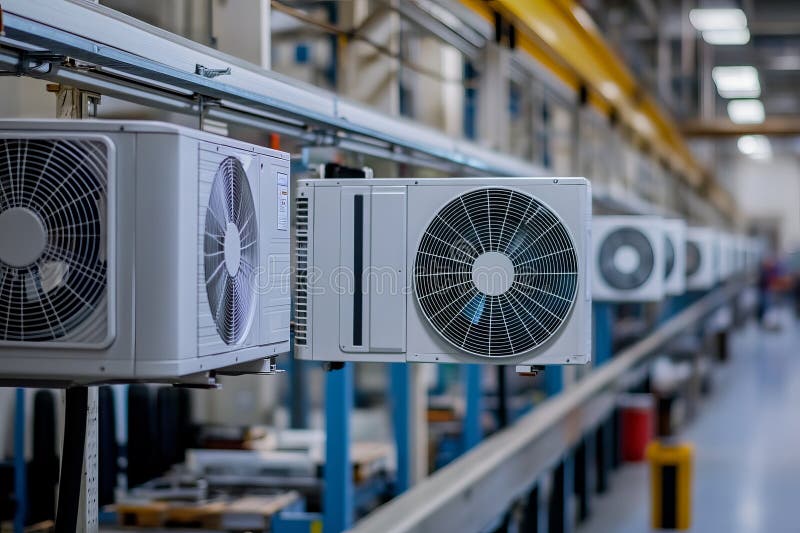In today’s fast-paced world, maintaining efficient heating, ventilation, and air conditioning (HVAC) systems is crucial for comfort and productivity. AI HVAC troubleshooting tools have emerged as a groundbreaking solution, enhancing how we diagnose and resolve HVAC issues. By integrating artificial intelligence, these tools offer precise, timely insights into system performance, ultimately transforming the HVAC landscape. Let’s delve into the transformative potential of these tools.

What are AI HVAC Troubleshooting Tools?
AI HVAC troubleshooting tools leverage advanced algorithms to identify and predict faults in HVAC systems. By analyzing vast amounts of data, these tools can detect anomalies and suggest corrective actions, optimizing system performance and reducing downtime. With the advent of AI, troubleshooting has become more efficient, accurate, and proactive.
How AI is Changing HVAC Diagnostics
AI is not just an addition to the HVAC industry; it’s a game-changer. By employing machine learning and data analytics, AI can preemptively identify issues before they escalate. According to ATA College, AI’s transformative impact is evident in its ability to enhance system efficiencies and reduce operational costs. This capability allows facility managers and technicians to focus on critical tasks, ensuring optimal system performance.
Key Features of AI HVAC Troubleshooting Tools
1. Real-Time Monitoring
These tools provide continuous, real-time monitoring of HVAC systems. By constantly analyzing system data, they ensure that any deviations are promptly flagged and addressed. This proactive approach minimizes disruptions and extends the lifespan of HVAC systems.
2. Predictive Maintenance
Predictive maintenance is a cornerstone of AI-driven troubleshooting tools. By predicting potential failures, these tools enable timely interventions, preventing costly repairs and system downtime. Learn more about how AI enhances predictive maintenance in this article.
3. Enhanced Data Analytics
AI HVAC tools excel in processing and analyzing vast datasets. They provide actionable insights, allowing for informed decision-making. The ability to interpret complex data sets AI-powered tools apart from traditional methods.
Benefits of AI HVAC Troubleshooting Tools
1. Increased Efficiency
By automating routine tasks, AI tools free up valuable time for technicians, allowing them to focus on more complex challenges. This increased efficiency translates to faster resolution times and improved system performance.
2. Cost Savings
AI-driven troubleshooting minimizes the need for manual inspections and reduces the risk of costly errors. By predicting failures and recommending timely interventions, these tools ensure that systems run smoothly and efficiently.
3. Improved Accuracy
The precision of AI tools is unmatched. By leveraging machine learning algorithms, these tools provide accurate diagnostics, reducing the likelihood of misdiagnosis and ensuring that corrective actions are effective.
Challenges in Implementing AI HVAC Tools
Despite their numerous advantages, integrating AI in HVAC systems presents certain challenges. These include the initial cost of implementation, the need for skilled personnel to manage and interpret AI data, and ensuring data security and privacy. However, as technology advances, these challenges are gradually being addressed.
The Future of AI in HVAC
The future of AI in HVAC is promising. As AI technology continues to evolve, we can expect even more sophisticated tools that offer deeper insights and greater efficiencies. The continued development of AI holds the potential to transform the HVAC industry, offering unparalleled benefits to both consumers and service providers.
Conclusion
AI HVAC troubleshooting tools are revolutionizing the way we diagnose and maintain HVAC systems. By offering real-time monitoring, predictive maintenance, and enhanced data analytics, these tools ensure optimal system performance and reduced operational costs. As we look to the future, the role of AI in HVAC will only continue to grow, offering exciting possibilities for innovation and efficiency.

FAQs
1. How do AI HVAC tools differ from traditional methods?
AI tools leverage machine learning and data analytics to provide real-time insights and predictive maintenance, whereas traditional methods rely on manual inspections and reactive responses.
2. What are the cost implications of implementing AI in HVAC systems?
While the initial cost of AI implementation can be high, the long-term savings from reduced maintenance costs and improved system efficiency often outweigh these initial expenses.
3. How does AI improve HVAC system efficiency?
By constantly monitoring system performance and predicting potential issues, AI tools ensure optimal operation, reducing energy consumption and extending the lifespan of HVAC components.
This article contains affiliate links. We may earn a commission at no extra cost to you.
